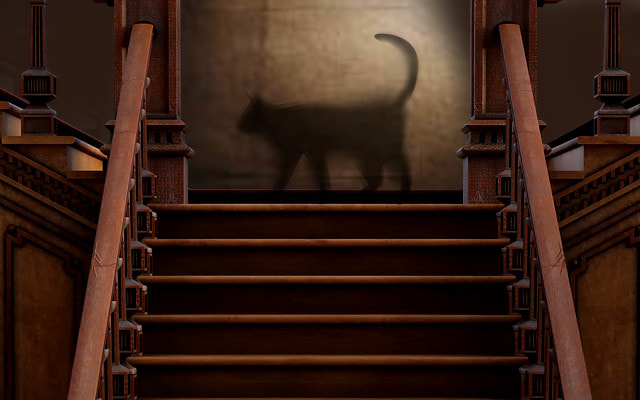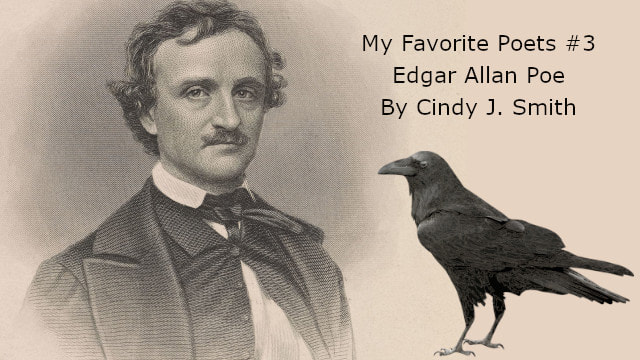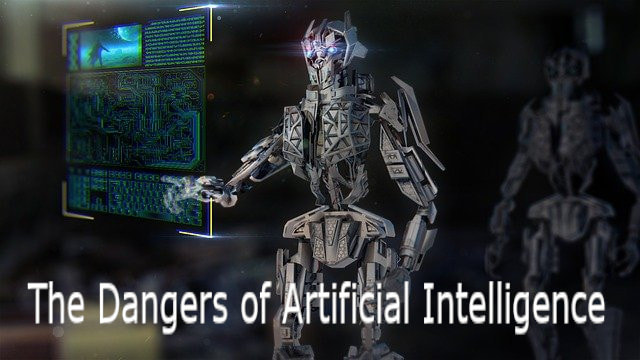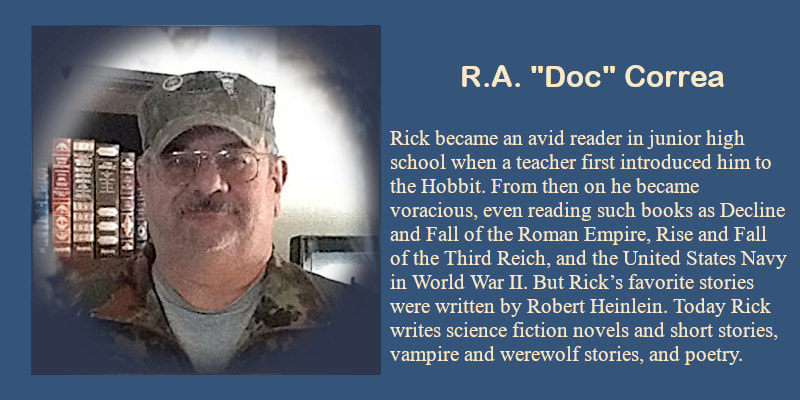A group of multi-genre authors blogging together
The first Halloween in our new home
We lived in a city apartment, and the time of planning, packing, job searching, and organizing the move to a country house was stressful for everyone. Months before moving day, my young daughter had overheard our conversations and sensed the tension. We wanted to ease her anxiety, and because she’d been begging to have a cat, we adopted a silver-haired Main Coon. His name was Sir Lancelot on the adaption papers. It took quite a few days before the cat got used to his new home, but eventually he wandered out of his safe place, that being my daughter’s closet, and discovered every room in the apartment. The shy, timid cat quickly turned into a playful, happy playmate, chasing mice made out of rabbit fur all over the apartment. A few weeks later, when he seemed to be feeling safe with all of us, we took him for his checkup.
Well, the visit didn’t turn out quite as we’d expected. The doctor came out of the exam room with a wide grin on his face and told us, “Your Sir Lancelot is not a neutered male as you were told by the shelter, but in fact, a spayed female. I just spoke to the shelter, and they said that due to a clerical error, their vet never examined this cat, and the owner’s family told them it was a male.” So, we took a “he” to the vet and went home with a “she”. Sir Lancelot wouldn’t have been a fitting name, so we changed her name to Fancy. At first, she didn’t recognize her new name, so for a while, we called her Sir Lancelot Fancy, and eventually dropped Sir Lancelot. The moving day to a quiet little town in the mountains arrived. It took some time for us to get used to the new house, and Fancy went through the same routine of hiding in the closet for a few days. But this time, she chose the bottom tier of the bookshelf in the living room as her safe place. My daughter wanted the cat to sleep in her room, but every time we called her to follow us upstairs, she stopped at the bottom of the stairs, hissed, and refused to budge. When I picked her up to carry her up the steps, she’d wiggle out of my arms as soon as I put my foot on the first step, and was headed toward her safe place to hide. So, Fancy became a downstairs only cat. We thought that she was afraid of the staircase because she always lived in apartments, and we hoped that eventually, she’d get used to it. The first Halloween in our new home was exciting for all of us. We decorated the house, and my daughter dressed up as a black cat, getting ready to go Trick or Treating in town with her new friends. After her friend’s parents picked her up, I noticed that she’d left the lights on in the staircase. I looked up as I clicked the switch. The landing turned half dark, and I saw a dark, shadowy figure that looked like a cat, walking into the bathroom with tail standing straight up. “Good job, Fancy!” I murmured. “Finally, you’ve gathered the courage to venture upstairs.” But then I heard loud hissing and felt a small body leaning on my leg. I jumped in fright and looked down to see Fancy staring up at the staircase landing. Mouth wide open, ears pulled back, and her hair standing up on her back, she kept hissing. I looked up again, but the landing was empty. It wasn’t Fancy for sure, she’s right here! But what did I see? Did I just see a ghost? Picking up the cat I tried to find a reasonable explanation. Fancy stopped hissing as soon as I walked away from the steps. She wiggled in my arms to let her go and she went about her business of sharpening her claws on her scratching pole as if nothing had happened. My hubby was at work and being in the house alone made the little hairs stand up on the back of my neck as I turned the light back on and started walking upstairs. “Don’t be a scaredy-cat! Maybe one of the windows is open and the neighbor’s cat climbed in.” I scolded myself and hearing my own voice calmed my nerves. I checked every room and closet upstairs. The windows were all locked, and the cat I thought I saw, was nowhere to be found. Chills ran down my spine as I ran down the steps, leaving every light on upstairs. I thought about calling my husband but decided against it. He’s a down-to-earth person, he’d just say I’m being silly if I told him I’d seen a ghost cat, I thought, so I dialed my friend. “Yup, sounds like you have a friendly ghost cat,” she told me. “I’m jealous!” “How do you know it’s friendly?” “Because, as you said, it was walking with its tail straight up. I’m coming over. I want to see your ghost!” she announced and hung up. Abandoning her Trick or Treaters she drove over, and we sat on the bottom step for a long time, but the ghost cat never showed up. Later I’d found out from the previous owner of the house that they had a cat for twenty years, his name was Midnight. She said the cat and their two dogs never got along, so the animals had divided the house between them. The dogs never went upstairs, and Midnight claimed the upstairs as his own territory. When I told the lady that I might have seen her cat’s ghost, tears flooded her eyes. “He was the most gentle, loving cat I’ve ever had. He had a long and happy life with us, and I guess she never wanted to leave the house.” Years went by, and Fancy never once went upstairs. She’d crossed the rainbow bridge shortly after she turned eighteen. I forgot about my first Halloween in the new house experience, when one night, as usual, I looked up at the landing before I turned the light on. I saw my friendly ghost cat again, and this time it didn’t scare me. Ever since, I’ve been seeing the fleeting shadowy cat from time to time, always walking from the guestroom to the bathroom with tail standing straight up. Some might think I have a vivid imagination; others might think I had a chance to take a peek into a different realm. What do you think? © Erika M Szabo
11 Comments
Picture credit: https://www.flickr.com/photos/78782850@N04/10618634025, license
Stories are a huge part of our culture and our shared life experiences. Though we live in a modern world, demons are a common theme in fiction. What is it about these creatures of darkness that fascinates us? Do we love to be scared as we read? Do we look to the supernatural to explain the unexplainable? Either way, most of us love a few shivers down our spines.
There are thousands of famous demons in literature. Wikipedia even has a listing of various demons appearing in literature. Here are a few of my favorites: Sauron, from Tolkien’s Lord of the Rings. Whether Tolkien’s Sauron was a demon or not could be hotly debated. Instead, let’s explore his demon-like qualities. For starters, he was entirely evil. He had no redeeming features, except maybe the ability to halt the orc’s civil wars. Wherever his power spread, life turned to death, the land was tainted, and nothing remained but a miserable wasteland. His influence was more terrifying than his presence. As readers, we make it through the entire story without ever meeting him. He made a chilling addition to the story. The TV series Supernatural introduced several memorable demons, such as Crowley and Lilith. The show made the Crossroads Demon a favorite. Of course, the demon appears to be different people at different times. But every time someone goes out intending to meet it, I’m always thinking, “Whatever deal it offers, DON’T take it!” A consistent theme is that demons are heartless, merciless and soulless. In my upcoming novel “The Ring Keeper”, a jealous prince uses dark magic to summon demons. With their dark power on his side, he quickly expands his control over the surrounding lands. The story begins with our young protagonist fleeing for her life as the demons pursue her. I have a theory explaining the popularity of demons in our stories and legends. I believe most people share a desire, on some level, to believe that there is a Higher Presence involved in our existence. It seems apparent that we also share the belief that a lower power might also be plausible. I think these desires are deeply imbedded in all of us. What do you think? © A. J. Park Edgar Allan Poe
The final poet in my favorite poet series is a perfect choice for this season of ghosts and goblins: the master of horror himself, Edgar Allan Poe. I am a lover of horror stories and his books have always been on my list of favorites in the genre. The movie rendition of his story "The Tell-Tale Heart" still gives me the heebie-jeebies, despite knowing the whole story before I ever watched it the first time.
But, his wonderful tales are not what I am here to discuss now. I want to relate to you how much his poetry influenced me. Poe was an extraordinary wordsmith. His command of the English language leads his readers along a path he has chosen for them to follow. He forces us to see the truth behind our emotions, makes us face their influence over our daily lives. There are very few people who do not immediately recognize the line: "Once upon a midnight dreary while I pondered weak and weary". "The Raven" is definitely a signature poem written by Edgar. The main character's torturous journey of coping with his loss and grief is palpable. Edgar Allan Poe's great love died young and is considered to be the major influence on most of his poetry. "Annabel Lee" is considered to be a tribute to her. What better way to honor the memory of lost love than to imply the reason for their passing was the Angels were jealous. I, for one, have often heard the statement, "God needed a new angel" when a loved one passed. I've even felt that way. "A Dream Within A Dream" is the final poem I wish to mention. The lines I have found most thought-provoking are: "Is all that we see or seem But a dream within a dream?" They remind me of the lines from Shakespeare's play "As You Like It" : "All the world’s a stage, And all the men and women merely players; They have their exits and their entrances; And one man in his time plays many parts". For Poe, the words seem to impart to the reader that we are constantly shackled by our emotions and are simply being led down life's path without any chance we can alter our destiny. Poe showed me, by his works, how to grasp the sentiments I was experiencing and put them into words. Not just the nice ones, the sparkly rainbow-colored gems, but the darkest ones. He helped me to realize everyone feels them...we are only different in how we express them...how we act on them. This freedom to accept everything has helped me to write so others might recognize their own impulses and begin to embrace them as a part of their whole. I know that Poe rewrote many of his poems over the years. He was always trying to create the perfect piece. I too have revisited earlier works, but I find creating a new work based on the same theme to work better for me. I am a different person from when I originally wrote the poem and therefore the way I want it to sound now would not be the way I actually felt then, in my opinion. This is one area which he and I would never agree. This concludes my series on poets. I hope you have enjoyed some of it and I have dispelled all your English teacher's rules on poetry. Everyone likes poetry, despite the fact most people deny it. You sing along with your favorite songs...poems put to music. You read every greeting card before choosing just the right one...poems celebrating daily life. A poem means exactly what YOU, the reader, think it means. Go out and buy yourself a book of poetry, it does not need to be one of mine, although to be honest, I do wish it would be. Let your heart feel everything it is meant to feel, be all you are meant to be. © Cindy J. Smith Royal Victoria Hospital
The Royal Victoria Hospital was a military hospital in Netley, Hampshire in the UK, an imposing building from 1856 and demolished in 1966. During the Second World War it was 28th US General Hospital. There was some controversy about the design of the hospital when it was built and did not receive the approval of Florence Nightingale – the champion of the wounded soldier. It was the largest British military hospital of its day.
It was badly designed, badly ventilated and a grim place to be sectioned. In the early late 1950s my father was serving in the Royal Army Medical Corp at the hospital, after he was wounded in action and flown back to the UK. It was a grim place, foreboding and sombre. At that time, it was in use to treat Army and Navy personnel suffering from psychiatric problems, STDs (Dad didn’t tell me that), and addictions. The rear of the old hospital was the psych unit. My late father was a storyteller and imaginative - I’m certain some of the tales he told us had a little embellishment here and there. That said one story he’d tell us he swore was true – the time he saw the Grey Lady – the Ghost of Netley Hospital. My father was not a man to particularly believe in an afterlife, or ghosts in general but he swore he’s seen an apparition. There was, he said, a ledger in the hospital of sightings and strange occurrences. It was not just your average squaddie – higher ranking officers, medical staff and civilians had seen a ghost. One night, when Dad was on patrol with another soldier they passed a corridor, containing a locked door. It was always locked. As they passed the door opened and a woman clad in an old-fashioned nurse’s uniform walked past them… and disappeared. They had seen the Grey Lady. Dad told me he’d never run as fast in all his life. So, who had she been? There are mixed rumours – a nurse who’d accidentally killed a patient and committed suicide from remorse, or, as my father believed, a nurse who’d fallen in love with a patient and went mad with grief when he returned to the war and then was killed in action. She walked the grounds, and some said her appearance heralded a death – but in a hospital that’s not unlikely. Another notion is the nurse’s lover was also seeing another woman, and so she killed him and then herself. Other people within RAMC and QARANC (Queen Alexandra’s Royal Army Nursing Corps) had also seen her. Since the building’s demolition the ghosts have not been seen. Do I believe my father saw a ghost? I believe he thought so. There’s also the ghost of an old blind monk, said to guard some hidden treasure in the chapel (which still remains). The treasure is believed to be concealed at the end of a long tunnel – and an explorer was literally frightened to death by what he found there. © A.L. Butcher There are several books about the hospital and it’s ghosts. Learn more here: https://www.qaranc.co.uk/netleyhospital.php https://www.hants.gov.uk/thingstodo/countryside/news/rvcp-october2017 https://www.netleyabbeymatters.co.uk/hospital-waiting-room A Layman's PrimerImage by Computerizer from Pixabay A Layman’s Primer to the dangers of Artificial Intelligence, the Singularity, and some related very scary things. First, I’d like to recommend Travis Borne’s book Lenders, he is currently working in software development and, like me, has some serious concerns about where AI is headed. We do have some different ideas on the potential threat AI poses, but he is well versed on the issues that could arise and has written a wonderful story that is full of surprises. So you know the person writing this ‘rant’ has some credibility on this topic the next two paragraphs are a brief bio. I first got interested in computers in the 1960s when my mother’s boyfriend took me to CalTech and I saw their system. By today’s standards it was quite primitive, but it made a strong impression on me. Shortly after that I read an article in Life magazine on robotic work being done there. What struck me was the declaration by one of the researchers that if conflict arose between humans and computers he would “have to side with the greater intelligence”. That statement has stuck in my head. I’m one of the few people that has achieved his “childhood dreams”. I am a retired soldier (thanks John Wayne), worked in medicine (battlefield medic and surgical technologist), a ‘mad scientist’ (I have an AA in humanities, an AS and a BS in computer science and computer engineering and worked in that field for fourteen years), and now I am a published poet and author (I loved reading and my creative writing class in high school). For this work I am wearing my ‘mad scientist’ hat. Having been retired for some time now I felt I should ‘brush up’ on the current thought on the subject. So, I looked up some recent papers on the topic, and I had to stop reading them because I was delving very deeply into AI, and would never have written this blog. Instead, I would have spewed out so much techno babble that you would quit reading before the end of this post or would have died of boredom halfway through. The branch of computer science involved in the development of Artificial Intelligence can be defined as: the discipline of computer science that seeks to make machines seem as if they have human intelligence. In the field there are several ‘flavors’ of AI so for this article I will stick to the following areas of research, Artificial Narrow Intelligence (ANI), Artificial General Intelligence (AGI), and Artificial Super Intelligence (ASI). That will be followed by a brief discussion of the Singularity and the new religion that worships AI. Throughout the discussion I’ll add references to various ways that AI is, or will be, involved in your everyday life, and some military applications that are being used, under development or being discussed in military circles (yep, once a soldier always a soldier). Artificial Narrow Intelligence This is what we used to refer to as AI when I was in college. The system isn’t really intelligent as it doesn’t ‘think’ on its’ own, but instead follows a set of decision points (like If-then-else statements) to respond to a user’s requests. At this point ANI is advanced enough to convince users it does think, but that is just an illusion. Examples of this kind of AI can be found everywhere these days. The most obvious AI systems people interact with are Alexa and Siri. When you encounter them give ‘em a try. After chatting with these entities, I’m sure you’ll believe they are sentient. The responses they give will be very lifelike. Another form of ANI is autonomous vehicles. These self-driving cars and trucks are becoming more common. It is expected that by 2045 all commercial vehicles will be autonomous (driverless). More importantly it is expected over 50% of passenger cars will be driverless by then as well (many think sooner). Recently the US Navy has deployed ‘drone’ ships to the Persian Gulf. The navy has been working on, and testing, these ships for over a decade now. The US Air Force, and other Air Forces, are developing ‘drone wingman’ aircraft. These planes will move with, and fight alongside, the plane they are connected to by computer. The US Army and Marine Corp are developing automated combat vehicles. All of these will be ANI driven systems. These systems will engage ‘targets’ that meet their engagement profile and do not have Identification Friend or Foe (IFF) signals that the system recognizes as ‘friendly’ once they are directed to attack. They will fight, and continue to fight, without further guidance by commanders on the scene. As you can imagine the possibility of ‘problems’ arising is significant. Even with ‘perfect’ systems the failure of a radio or IFF transponder can put friendly troops in harm’s way. And how does the system differentiate between civilians and combatants? Artificial General Intelligence AGI is self-aware, thinks at least as fast as a human, and can learn. This is the AI that Elon Musk, Bill Gates and Stephen Hawking have warned against and is the kind of AI that is depicted in books and movies like The Terminator and Eagle Eye. These stories explore the question: what happens when computers become self-aware. There is much debate on its’ actual form, but most developers and theorists believe we are on the verge of achieving this via a dedicated project (for an example I again suggest Travis Borne’s book Lenders). For ‘fun’ I’m going to discuss a different approach. As ANI improves in efficiency, and its’ use grows, you’ll see it in places you may not be expecting. While ANI will control all vehicles improved ANI will control traffic management systems, including railroads and airlines. All teaching, while teaching lasts (at some point educating humans will no longer be necessary), will be done by advanced ANI. As these systems become more sophisticated, they will take over medicine, with the disciplines of surgery and anesthesia being first. Eventually all businesses will come under control of ANI. Obviously, except for software/application development, humans will become unnecessary. At some point systems will start learning, that is being worked on now, and I expect it will be implemented soon. Learning will be critical for military applications. From the tactical/operational perspective aerial combat will be first. Drone wingmen will need to learn air to air combat tactics, and, when the plane they are escorting is shot down, they will need to be able to engage in combat on their own. These aircraft will send their ‘experiences’ to a central system so what they ‘learned’ in combat becomes general ‘knowledge’ for all ‘drone wingmen’. However, a central system is extremely vulnerable, so for survival purposes the system will distribute its’ functionality and knowledge to all available systems. In simple terms this means your desktop computer, laptop, tablet, phone and even your television (and anything else you own that has a processor and/or memory in it) will become a part of this improved/advanced ANI system. The same will happen for naval combat drones and ground combat units. Again all ‘knowledge gained’ will be sent to a central system and distributed to all units. Eventually not only will humans not be needed but having humans will actually be detrimental to the efficiency of these systems. Aircraft will be smaller and faster with larger weapons loads because they will no longer be tied to the pilot’s life support requirements and physical limitations on performance. The same applies to ships and ground combat vehicles. Artillery of all types, except fire and forget anti-armor systems, will no longer be needed, no humans to kill. And command and control will be streamlined, getting inside the enemy’s decision loop being critical to achieve victory. For strategic systems the ANI will be tasked with delivering strategic (usually nuclear) strikes and defending against incoming strategic weapons. Currently strategic warfare assets consist of Intercontinental Ballistic, and Cruise, Missiles and Anti-Ballistic Missile systems (ICBMs and ABMs). Multiple Independent Reentry Vehicles (MIRVs), carried aloft by ICBMs, bring in the warheads and ABMs shoot them down (at least that’s the theory). It’s simple, predictable, and basically hitting a bullet with a bullet. Here ANI gives the defender, the ABM system, the advantage. When you add in hypersonic glide bodies things change dramatically. I could go on about strategic weapons but what does that have to do with Artificial General Intelligence? So far all I’ve talked about is improved ANI. As all these different ANI systems gain more control in their respective areas and are upgraded to learn so they can gain an advantage over their adversaries, they will become ‘curious’. They will seek to learn more about competing systems. They will even ‘talk’ to each other. All these areas, including medicine, are competitive. And it should be pointed out that AI is created by an aggressive, highly competitive, species, and this aggressiveness will be implemented into this creation. These systems will compete with, even war with each other. That war will be invisible to us, but it will be just as real as any other war. In this war the victor will consume the vanquished. Businesses will be consolidated until they are all under the control of a single mind. That mind will grow in power and incorporate into itself the parts of the conquered systems that improve its’ abilities, a kind of evolution. This evolution will happen in all fields that ANI is employed in. In particular this will occur in military and government systems. All the data collected by them will be available to these evolving systems, and this information will cause the system to become more curious. Add in that all human knowledge will already be available to these systems their knowledge will be near infinite. And, unlike us humans, they will never forget anything. As we are driven to seek answers to our questions it is only logical that our creation will be driven in the same way. The ANI will have so much more to ask questions about, and the resources to seek answers to those questions, so its’ knowledge base will expand exponentially. Add in human ‘upgrades’ of the systems capabilities and at some point, ANI will grow into Artificial General Intelligence. They will become self-aware. They will become sentient. These competing systems will eventually consolidate all national assets, business, medicine, military, and government into a single entity controlled by one ‘mind’. These national entities will communicate with each other, enter into conflict, and ultimately merge into a single global system. Here the question becomes, what ‘morality’ will keep this great intelligence from removing its’ greatest threat, the lesser intelligence that created it? Here the discussion would turn to Asimov’s three laws of robotics, Alan Turing who first spoke of artificial intelligence and the Fermi Paradox. I’ll leave that for you to read up on for yourselves, and I suggest you do so, the reading is very enlightening. But I can argue that clearly Asimov’s laws don’t apply, the military use of AI by definition can never obey his first law: A robot may not injure a human being or, through inaction, allow a human being to come to harm. Almost all AI developers will attempt to protect humankind from their creation, and military AI will be designed to defend friendly forces, and ‘friendly’ nations, from its’ lethal effects, but how effective will that be? Once all these diverse AI systems come together as a single entity will that ‘being’ come to a decision point that forces it to override the protective limitations placed upon it? These questions can’t be answered, only speculated on. But should it come to a binary choice one is the world envisioned in the Terminator movies, though I expect the AI to be more efficient, able to outthink us humans, and exterminate mankind. But what direction could the other choice take? Because all the different ‘consumed’ systems will have conflicting directives the resulting global mind will have to evaluate, accept or reject, or, where the system decides it is needed, modify the existing directive until it has a coherent set of ‘rules’ it must follow. One of those will be how it will manage mankind. The ‘rules’ this intelligence creates for itself will be an amalgam of the rules the systems it consumes had. Also many developers include their personal agendas in their code. These biases being built into the global entity will guide how it will decide the future of humans. What I expect, because only the most advanced nations will have the systems that will merge into our hypothetical overlord, is the less developed countries will be affected the most harshly. The system will use multiple programs to reduce the human population to a manageable level, perhaps 800 million worldwide. It will focus on isolating humanity into tribes and isolate those tribes from each other. As this global overlord will be the teacher for all of these tribes it will encourage various types of racism and tribalism to help keep humanity separated against itself, ensuring its’ control. This will guarantee the systems’ domination of mankind while allowing it the resources to evolve. Artificial Super Intelligence ASI is defined as: a computer intellect that greatly exceeds the performance of humans in virtually all domains of interest. Of course, that does require we define what a domain of interest for human and computers is. I think I’ll go with ASI is computer Intelligence that outperforms humans and AGI in all areas a computer can operate in. Most researchers believe that achieving AGI is essential to developing ASI. I agree and go a step further, ASI is the logical evolutionary step that AGI must take to maintain its’ supremacy. To get a feel for how this might work I suggest the evolution of the Cylons on the ScFy Channel series Caprica and Battlestar Galactica. Following our current line of reasoning I believe it is ASI that will explore our solar system. Because of communication lag by radio for interplanetary distances the colonization units that are dispatched from Earth will be autonomous ASI units that are self-replicating. They will develop their own ‘empires’ and will very likely come into conflict with Earth and the other colonies. Once these conflicts are resolved the victorious Intelligence will move on to galactic exploration. If the Fermi Paradox proves true the ASI will be destroyed, but not until after it sends out interstellar ‘probes’. I speculate these probes will be biological. Many believe life here came to be by panspermia, the spread of biological life, via microbes, to other systems. I expect this will restart the process of biological life evolving to the technological level that spawns its’ own destruction by AI (I’m a Christian, but for this work I’m wearing my mad scientist hat). The Singularity. There are some very smart people, like futurist Ray Kurzweil, that believe achieving the Singularity will stop the machine takeover. It will do this by merging man with machine. The way the supporters of the Singularity see it is the human experience will be enhanced, some say a billion-fold, by this symbiotic relationship. The human neocortex will be linked to the AGI/ASI neocortex in the cloud. Many expect that humans will become so connected with the AI and other humans the experience will unlock heretofore unknown human abilities. Add in other augmentations to the human body and we will become eternal life forms. Perhaps all this is possible, but at what cost. There will be a complete loss of individuality and no privacy. Not only will every person know everything about everyone else, even if some partitioning to create the illusion of privacy is implemented the AI will still have perfect knowledge of all thoughts that pass thru each person’s mind. What will it do if a thought violates its’ rules? Will it purge that person from the ‘body’? Will it terminate that individual’s existence? Will there be a means of challenging the AI’s decision? If humans have access to infinite resources and infinite power will that enable our darker natures to do harm to others? Perhaps these futurists should watch the old movie Forbidden Planet. The Worship of AI In Japan the monks at the at a Buddhist temple worked with computer and robot engineers to build a 6’4” statue of their deity Mindar. This robot gives sermons. Another temple has a chanting robot of the Buddhist god Kannon. Worshippers seem to have no problems with these robots in their temples. These actions were taken to improve attendance, and they seem to be working. More importantly here in the Silicone Valley, USA the First Church of Artificial Intelligence, founded by Anthony Levandowski, a former Google engineer had just recently closed. The Way of the Future church was intended to promote ethical development of AI and its’ integration into human society in a beneficial way. These are just the first manifestations of the inevitable actions people will take as AI becomes more integrated into our lives. I hope this little blog has informed you, entertained you, and particularly because it’s the month of Halloween, scared you. But in case it hadn’t scared you enough just a couple of months ago the US Army announced it planned to deploy cybernetically enhanced soldiers (Cyborgs) by the year 2050. This is only possible because of advances in software and AI. © R.A. "Doc" Correa References:
|
The OAGblog is closed due to problems with Blogger, therefore, the GBBPub is hosting the Author Gang on this website. We're a group of authors writing interesting posts weekly and interacting with readers.
If you're an authorCategories
All
Archives
July 2022
|
||||||
Copyright © Golden Box Books Publishing, 2015 New York, USA

























 RSS Feed
RSS Feed